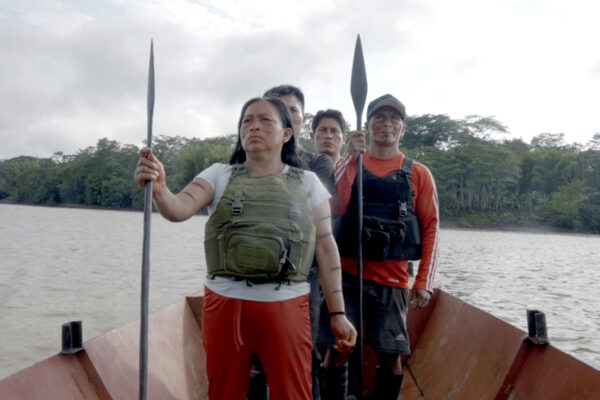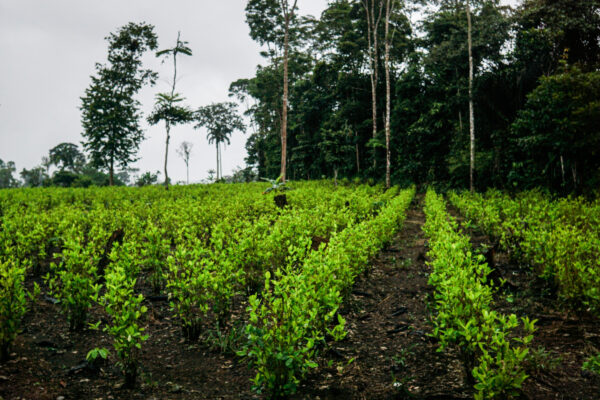The Manu national park and its buffer zone in Peru was international news early last year after scientists found it is “top of the [world’s] list of natural protected areas in terms of amphibian and reptile diversity”, beating off stiff competition from the Yasuni national park in neighbouring Ecuador. What these news reports didn’t acknowledge, not surprisingly, are the immense threats facing Manu – a Unesco biosphere reserve in the south-east Peruvian Amazon where Unesco states the biodiversity “exceeds that of any other place on earth”.
The first such threat, to the park itself, is from oil and gas exploration and exploitation. For years Manu has been believed to hold significant hydrocarbon deposits, and numerous oil and gas industry maps depict “undrilled prospects”, “seeps” and a “spring” lying under the park. According to Peru’s Ministry of Energy and Mines, five distinct “geological structures” in Manu could hold more than 14 trillion cubic feet of natural gas.
Shell explored in the far west of Manu in the 1980s, and in early 2013 the Guardian revealed that Pluspetrol was planning “geological exploration” there. Indeed, in a recent report NGO Peru Equidad refers to claims by local inhabitants reported by a Catholic priest living in the region of “continuous helicopter flights towards the Manu headwaters” which suggested “seismic exploration or preparations for seismic” was taking place in the park. The report also states that local inhabitants of the River Manu Chico region have been “disturbed” by overflights which “could be related to extractive projects.”
Another, arguably more serious threat to the park is the extension of the southern branch, dubbed “PE-5S”, of the national “jungle highway” network, parts of which were first built in the 1960s. According to Peru’s Ministry of Transport and Communications (MTC), the total projected length of the “PE-5S” is just over 1,000 kms, with only 109 kms paved to date, 74 kms unpaved, and 890 kms “en proyecto”.
MTC maps show the planned route: east from the Junin region into Cusco, along the River Urubamba and River Camisea, across the watershed into the Manu basin, and then along the River Manu past Boca Manu, a settlement at the confluence with the River Madre de Dios, and eventually all the way to the River Heath and border with Bolivia. What this would mean is running right through the Manu park, as well as penetrating deep into a supposedly “intangible” reserve for indigenous peoples living in “isolation” and “initial contact”, skirting the Amarakaeri communal reserve, and entering two other supposedly “protected natural areas”: the Tambopata national reserve and Bahuaja Sonene national park.
According to Peru Equidad, the very first steps towards this extension immediately to the west of the park, in its buffer zone, have effectively already been taken. In its recent report, The Battle for “the Nanti”, the NGO states that a trail has been opened up through the forest linking three “Matsigenka-Nanti” settlements along the River Camisea:
It must be pointed out that [this trail] coincides with the proposed route for the national [highway] network which comes from the central rainforest region (Junin), crosses the Urubamba towards the south, and runs parallel along the length of the [River] Camisea, passes the three settlements, and then penetrates the Manu national park. [A]lthough the model of the Camisea [gas] project continues being “off-shore in-land” (without access roads), there are national and regional plans proposing, in the medium- or long-term, extending communication routes into the upper Camisea and the Manu park.
On the other side, to the east and south-east, things are moving too. A road ultimately running from Cusco is gradually getting closer and closer to Boca Manu, and the plan to build the stretch between Boca Manu and Boca Colorado, a town down the River Madre de Dios, to the east, was declared in late 2013 in the “public necessity” and “national interest” by the Peruvian Congress’s Commission on Transport and Communications.
Indeed, Madre de Dios’s new regional president stated before he was elected that the Boca Manu-Boca Colorado stretch of highway is on his agenda, and only yesterday he said in a meeting that connecting Manu to Tambopata was among his plans. Back in 2011 Unesco expressed concern about the “increasing pressures” that the Boca Manu-Boca Colorado stretch would “likely” bring on the Manu park, and requested that the Peruvian government provide an “Environmental and Social Impact Assessment” by 1 February 2014, just over a year ago today.
“The report was due by February last year [but] it was never received,” Unesco told the Guardian. “Unesco has requested it again but it has still not arrived.”
True, the idea of building a highway into the Manu basin has been around for many years: one president, Fernando Belaunde Terry, even visited the region in the early 1980s and was forced to pull out after being attacked by indigenous people living in “isolation”, the “Yora” or Nahua, who at the time had no sustained contact with other people. But MTC maps say what they say, and the recent developments immediately to the west and east of the Manu park make it clear that the threat is growing.
As scientists and many others have emphasised, building roads into fragile environments such as tropical forests, like the Amazon, can have particularly devastating impacts. These include physical disturbances to the soil, vegetation and water-flows, pollution, and opening up previously inaccessible areas to hunting, colonisation and natural resource exploitation.
In the case of Manu, a potential highway or oil and gas operations don’t only pose dangers to the reptiles, amphibians and other spectacular biodiversity, such as birds and butterflies, for which it is arguably most famous. The park is also home to various indigenous peoples, including the Matsigenka, the “Nanti”, or “Matsigenka-Nanti”, and one group known as the “Mashco-Piro” living in “isolation.”
There are also other threats to Manu and its inhabitants: logging, cocaine industry trafficking, and even people looking for archaeological remains including a “lost Inca city” known as Paititi. One further, outside threat is a gas pipeline which could connect potential deposits in a concession known as Lot 76, to the immediate east of Manu, to the Camisea gas fields, Peru’s biggest hydrocarbons project, to the west of the park. Several years ago the International Union for Conservation of Nature raised the possibility that a pipeline “might traverse the property” to unite with Camisea, although Unesco subsequently reported that the company operating in Lot 76, Hunt Oil, stated “there is no intention to plan or build a pipeline” affecting Manu.
Finally, it’s essential to point out that the park’s buffer zone – included within the scientists’ research – has already been opened up to gas exploration and exploitation for years. The Camisea gas project, as operations there are known, has been producing gas since 2004 and includes a swathe of the buffer zone, as does Lot 76, where Hunt Oil is currently exploring. In fact, Sernanp, the government institution responsible for “protected natural areas” like Manu, expressed concern that the expansion of operations in Camisea – approved by the Ministry of Energy and Mines in early 2014 – would drive indigenous people in “isolation” into Manu to seek refuge.
The Ministry of Transport and Communications, Ministry of Energy and Mines, Pluspetrol and Hunt Oil did not respond to requests for comment.













